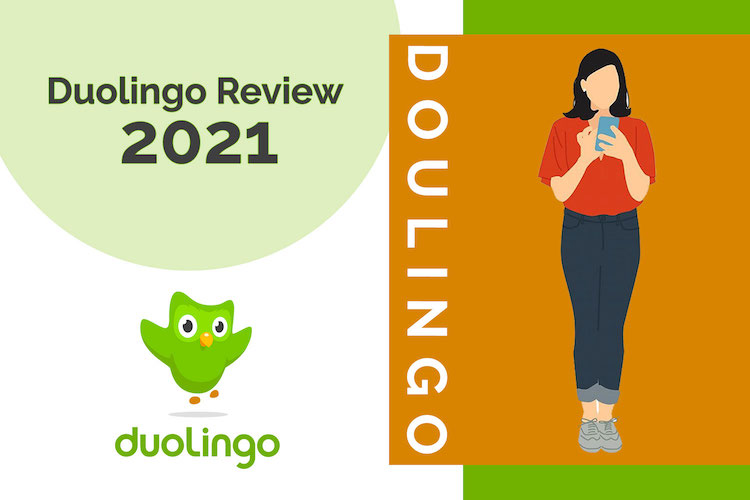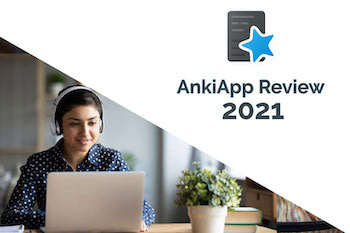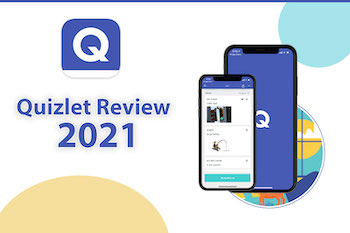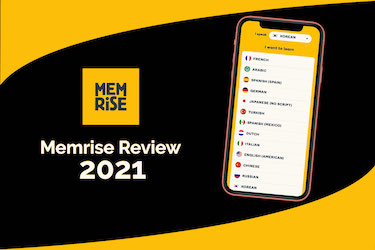As more and more people from different countries interact with one another, whether for work, school or fun, it comes as no surprise that more people are becoming multilingual.
This means learning new languages in our globalised world is becoming increasingly useful. It can help with job prospects, meeting new people and forming new friendships, it can even make going on holidays abroad much easier too!
There are many ways to go about learning a new language, and one of the most popular options in recent times is through language learning apps. There are many available, some of the most popular being:
- Memrise
- Babbel
- Busuu
- And Duolingo
Today we are going to review the latter, and find out what exactly Duolingo has to offer its users.
History
Duolingo was designed by a man named Luis Von Ahn, a professor at Carnegie Mellon University, and one of his graduate students, Severin Hacker.
When they began designing their app in 2009, Von Ahn had two core ideas:
- the app would help people learn their target language by translating words and phrases from actual documents. (Though this feature has since been removed).
- and the app should be free for anyone to download and access.
While the first of their two ideas may have changed, the creators have stuck to their belief that education should be free and accessible to everyone.
Since the app's official release in 2012, it has amassed over 30 million active users. So, what is all the fuss about?
Features Of The App
Like many language learning apps, Duolingo boasts a variety of features designed to help its users learn their target language in a fun and efficient way.
One of the most unique aspects of this app is how it turns learning into a game. Each lesson rewards users with XP, gems (which can be spent in the shop) and sometimes even badges. While if too many questions are answered incorrectly, the user may lose a life. If they lose all of them they will then have to wait for their health to refill, before being able to play again.
Besides this engaging approach to learning, the app also has a wide array of other features, which all combine for an immensely interactive experience.
1. Over 35 Languages Available
Duolingo is home to over 100 different courses spread across the 38 languages it offers.
These languages vary from the most popular, such as French and German, to more niche choices such as Irish or Yiddish! The developers have even included fictional languages from TV favourites Game of Thrones and Star Trek, just for fun.
2. Teaches Sentence Structure
One of Duolingo's stand out features is the emphasis it puts on grammar and sentence structure.
By introducing grammar and forming sentences early on, Duolingo helps users lay down solid foundations for the rest of their learning. Many other apps will focus on improving their user's vocabulary, without actually teaching them how to use it in a sentence.
In the long-run, this means that Duolingo helps users to prepare for actual conversations in their target language.
3. Strengthen Skills
With each and every lesson available within the Duolingo app, users can re-do lessons numerous times in order to 'level-up' and master that particular skill. The number of levels vary from lesson to lesson, from 1 to 6!
With each level mastered, the lessons become increasingly more difficult, so users still have some challenge when learning.
4. Customised Goals
As with many other apps focussed on language learning, Duolingo offers customisable goals and daily reminders.
But unlike other apps, Duolingo offers a 'time' goal. How many minutes a day the user wishes to practice.
Which can be incredibly beneficial for days when people are too busy to dedicate longer amounts of time to learning 5/10/15 new words in apps like Memrise. With this timed goal, it doesn't matter if users learn something new, or simply review what they have learned in the past, they can still meet their goal!
5. Repetition
When it comes to learning languages, spaced repetition is nearly always the way to go!
The algorithm within Duolingo is smart, as it logs which words users appear to struggle with and feeds them back more regularly than those which have already been mastered.
This allows users to practice words they struggle with, without having to take a lesson exclusively dedicated to them.
6. Variety Of Teaching Methods
When creating Duolingo, the developers have utilised a combination of passive and active lessons in order to help their users learn efficiently.
This means that they have a variety of activities which involve reading, listening, spelling and even speaking, which combine together and provide an interactive experience.
Which tasks a user has to complete switch every time they start a lesson, even if it is one that has already been done previously. Combatting the monotonous feeling which can sometimes happen with activities based on spaced repetition.
What Are The Advantages And Disadvantages Of Learning Language With Duolingo?
One of the most important things when looking into learning a language through an app, is understanding the advantages and disadvantages, or limitations, each app offers.
Duolingo provides many benefits, the biggest one being that all of their content is free! Many language learning apps require people to purchase a premium membership before allowing them to access the full content. This is where Duolingo differs. While there are some features which are exclusive to premium members, the actual courses are available regardless of a person's membership type.
This is thanks to Von Ahn's experience growing up in Guatemala, and seeing how expensive it was for people to learn English is part of what motivated him to create Duolingo in the first place. As such, the app continues to allow its free members access to every course and all its content in full!
Another great thing about this app, as was mentioned earlier, is that it focuses on grammar as well as vocabulary. Learning the grammar of a target language plays a key role in learning how to speak it fluently, and truly understand it. Especially those where sentence structures may differ to what a person is used to in their native language.
Unfortunately, many other apps seem to dismiss it in favour of teaching vocabulary and short phrases. While these may be helpful from a tourist perspective, if a person is looking to speak a language conversationally, knowing the correct grammar is an important part of that. But Duolingo understands the importance of both, and begins introducing grammar early in each course.
Duolingo may also be beneficial to anyone with a competitive streak. Because of the game-like nature of this app, it really isn't a surprise that it offers a competitive aspect.
Within the app users are able to access community leaderboards, where users can compete with each other to move up in the ranks. A person's rank is determined by how much XP they have earned that week. Those who are in the top 15 are then promoted into the next leaderboard!
It is also possible for people to create smaller competitions. Users are able to add their friends, and other learners, in order to compare, compete and motivate one another.
This social feature is great, and another example of how the gamified nature of Duolingo can be used to push people on their journey, while also promoting regular practice sessions each week.
The last advantage of Duolingo which will be addressed, is it's structured lessons. Many people may feel overwhelmed when starting out;
- Should they start with common phrases? Like 'where are the toilets?'
- Or maybe something simpler, like colours and numbers?
This app takes the guesswork out of learning a new language. It's strict structuring gives its users a clear path as they begin to learn how to speak, read and spell the language they are learning.
Each lesson follows on from the last, while adding in new phrases and more complex sentences. Allowing every user to avoid the overwhelming feeling of deciding what they are going to learn that day.
Though this can also be considered one of the downfalls of the software as well. Because of its strict structuring, users are unable to progress onto the next lesson without completing the ones before it to a certain proficiency. There is no other option, which may be annoying for more advanced users and lead to the app feeling excessively repetitive.
Which leads into our next point, the early lessons of each course can be extremely repetitive. As the app tries to give users a vocabulary large enough to use sentences, people are often left answering the same few questions over and over.
For example, the first unit of German revolves around words from the same few categories (phrases, food, animals, addressing oneself and others etc), and forming sentences with these words using connectives such as 'and', 'it' or 'the'.
So, users who may already have some knowledge of the language, may find this can become incredibly monotonous and possibly even off-putting.
There is a slight solution to this, when first joining a language course people are met with a choice. The app will ask them if they are a complete beginner, or if they already have some knowledge. If a user selects the latter option, they will then be taken to a short test which will gauge their level and allow them access to the appropriate units.
Another shortcoming with this app is the lack of 'real' practice it offers. While the cute characters will do their best to teach you everything you need to know, they cannot emulate a real conversation within the target language.
This means that even with this app and all its features, users will need to find outside sources with which they can converse, to perfect their fluency.
It would be interesting to see the developers introduce a feature for this in the future, even if it pairs users with one another through the social aspect they already have in place!
Overall, the benefits definitely outweigh the limitations of this app. If only for the fact that all the lessons are free. However, users may find they need to supplement what they learn through Duolingo with outside sources to really master the language.
Which Is Better: The Premium Membership Or The Free Membership?
Given the fact this app offers all of its course content for free, it can come as a surprise to learn that there is even a paid membership at all.
As of May 2021, if a person wants Duolingo Plus they are looking at spending either;
- £12.49 paid monthly, or
- £149.99 paid yearly.
The premium membership with Duolingo offers a few things. First and foremost, it removes the ads which appear within the app. While some people may not find this to be a problem, they can be quite distracting at times.
Users also receive game-like bonuses, such as unlimited lives and 'streak-freezes' allowing users to continue learning even when they 'fail' a class, or maintain their streaks if they forget to practice one day!
Premium members also receive access to a pronunciation feature, which allows them to listen back to their vocal exercises. This feature allows premium members to really work on their pronunciation, as it allows them to listen back to what they said, while also prompting them to repeat words they struggled with.
Being able to practice the speaking side of learning a new language can be invaluable, especially for users who are wanting to really hone their fluency.
Other Apps For Learning Language
While Duolingo is often the first to mind when people talk about language learning apps, it is certainly not the only popular option available!
- Memrise: An app utilising spaced repetition, designed by a grand memory master, and a neuroscientist. Unlike Duolingo, this app puts a greater focus on vocabulary than grammar and sentence structure. Memrise also offers a short taste of it's content before requiring users to pay for a membership.
- Busuu: Similarly to Duolingo, Busuu offers a sense of community with their app. It has a 'community' feature which allows users to help one another with things like pronunciation, grammar and spelling. Busuu, similarly to Memrise, only offers a portion of its content to free members, however users are able to try a free 7-day trial period before committing to a paid membership. Something Memrise does not offer.
- Babbel: Just like Memrise and Busuu, users of Babbel will have to pay for a membership in order to gain full access to the courses offered. This is not uncommon in language apps, and is precisely why so many people choose to learn with Duolingo. One feature of Babbel which sets it apart from the others, is the podcasts which users have access to. They aren't available in every language, but some of the popular courses contain podcasts spoken by natives, which can really give learners a head start when it comes to understanding their target language in practice.
Summary
Duolingo is definitely one of the most popular language learning apps available, from the jokes surrounding their little green owl mascot, to people actually learning from it's content.
While a big part of Duolingo's popularity may arise from its free content, the way the creators have gone about designing it is also a contributing factor.
By gamifying learning in this way, and adding in different levels which earn users XP and gems, the creators have really set Duolingo apart from other apps.
















